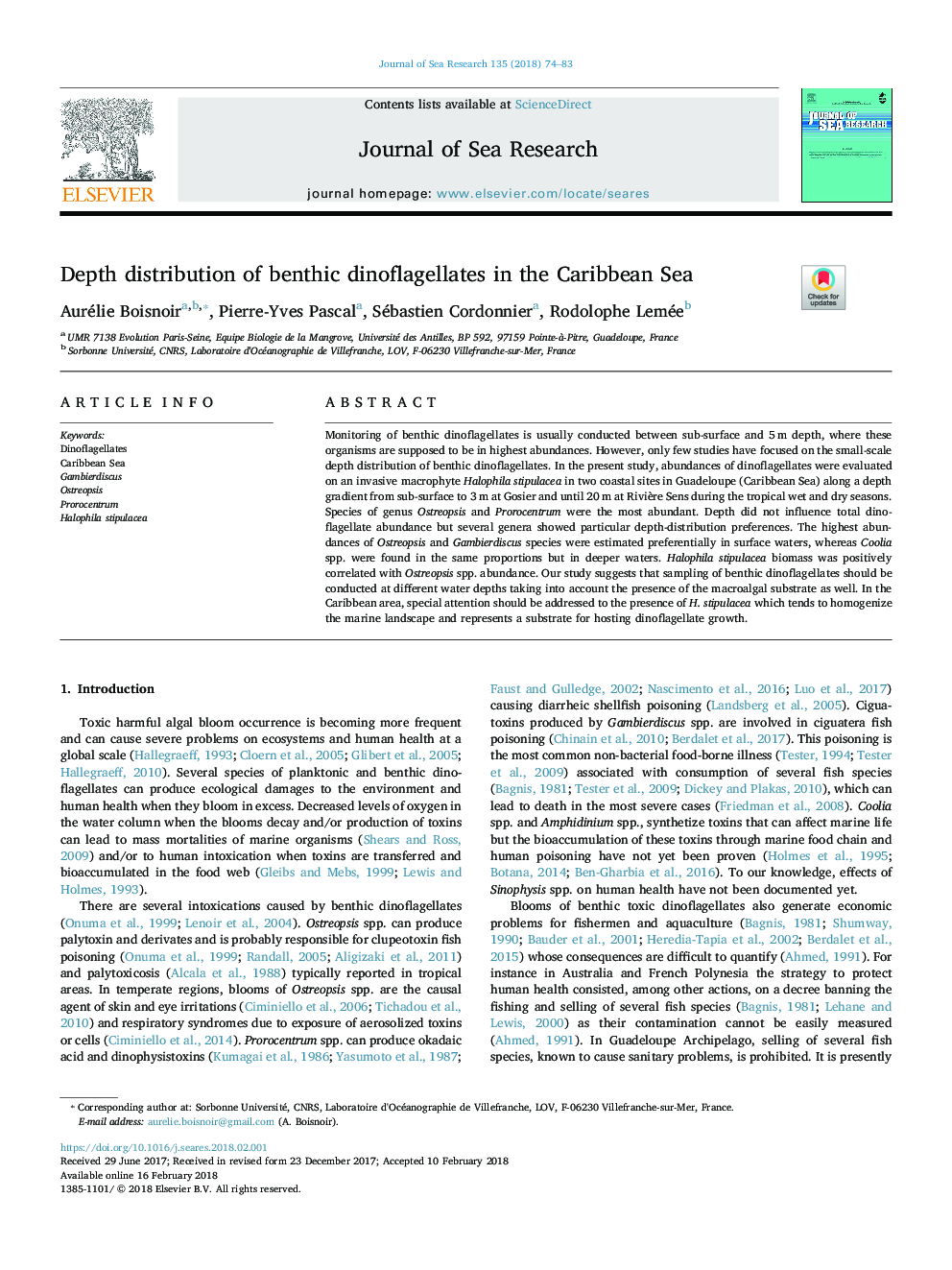| Article ID | Journal | Published Year | Pages | File Type |
|---|---|---|---|---|
| 8886131 | Journal of Sea Research | 2018 | 10 Pages |
Abstract
Monitoring of benthic dinoflagellates is usually conducted between sub-surface and 5â¯m depth, where these organisms are supposed to be in highest abundances. However, only few studies have focused on the small-scale depth distribution of benthic dinoflagellates. In the present study, abundances of dinoflagellates were evaluated on an invasive macrophyte Halophila stipulacea in two coastal sites in Guadeloupe (Caribbean Sea) along a depth gradient from sub-surface to 3â¯m at Gosier and until 20â¯m at Rivière Sens during the tropical wet and dry seasons. Species of genus Ostreopsis and Prorocentrum were the most abundant. Depth did not influence total dinoflagellate abundance but several genera showed particular depth-distribution preferences. The highest abundances of Ostreopsis and Gambierdiscus species were estimated preferentially in surface waters, whereas Coolia spp. were found in the same proportions but in deeper waters. Halophila stipulacea biomass was positively correlated with Ostreopsis spp. abundance. Our study suggests that sampling of benthic dinoflagellates should be conducted at different water depths taking into account the presence of the macroalgal substrate as well. In the Caribbean area, special attention should be addressed to the presence of H. stipulacea which tends to homogenize the marine landscape and represents a substrate for hosting dinoflagellate growth.
Related Topics
Physical Sciences and Engineering
Earth and Planetary Sciences
Oceanography
Authors
Aurélie Boisnoir, Pierre-Yves Pascal, Sébastien Cordonnier, Rodolophe Lemée,
